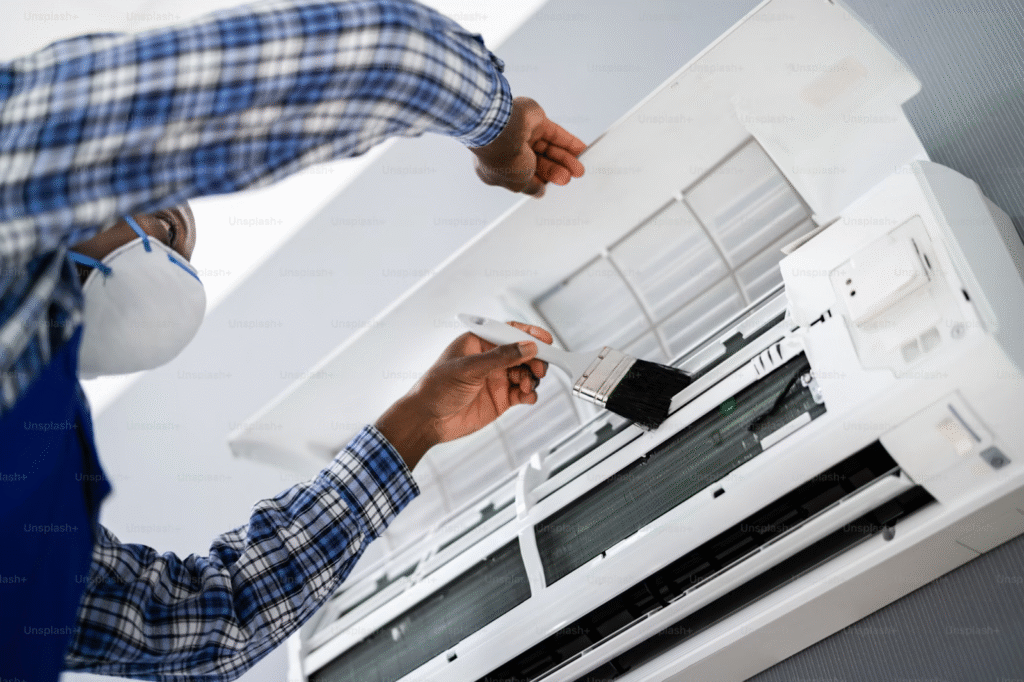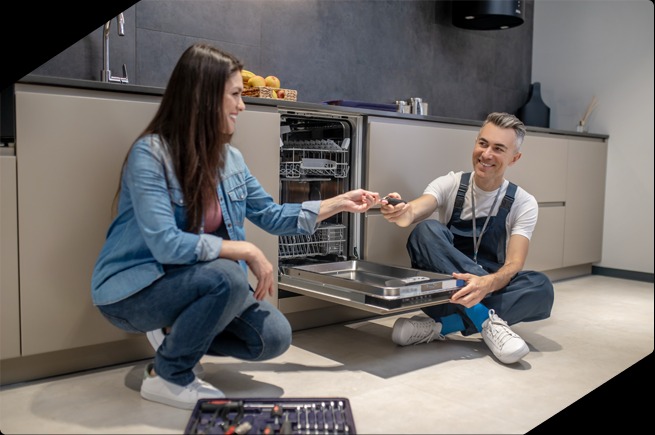Your restaurant’s main oven dies during Friday dinner prep. You’ve got 80 reservations booked and half your menu just became impossible to serve. You call customers cancelling reservations, turn away walk-ins, and watch thousands in revenue disappear while your kitchen staff stands idle getting paid for doing nothing.
That oven failure didn’t just cost the repair bill. It cost you $8,000 in lost Friday night revenue, $2,000 in wasted prep inventory you can’t use, $1,500 in staff wages without corresponding revenue, and immeasurable damage to your reputation from disappointed customers who might not return.
Commercial appliance failures don’t create inconvenience like residential breakdowns. They create immediate measurable financial damage that extends far beyond repair costs. Every minute critical equipment stays broken, your business loses money in multiple ways simultaneously.
This guide breaks down the real revenue impact of commercial appliance failures, quantifies costs businesses often overlook, and explains why investing in preventive maintenance and rapid response repair services saves dramatically more than it costs.
Also Read: 5 Common Mistakes To Avoid While Buying Home Furniture
Direct Revenue Loss From Downtime
The most obvious impact of equipment failure is revenue you can’t generate because you literally can’t operate without functioning equipment.
Sales You Simply Cannot Make
Every hour your business operates generates expected revenue. When equipment failures prevent operation, that expected revenue vanishes. You don’t just delay those sales. You lose them permanently.
A restaurant averaging $500 hourly during dinner service loses $2,000 during a four-hour equipment failure. That money never comes back regardless of when repairs complete. Those customers ate elsewhere tonight and your revenue opportunity is gone.
Laundromats depend on functioning machines. If 10 of 30 machines are broken, you’re operating at 33 percent reduced capacity. Customers arriving find all working machines occupied and leave. You’ve lost not just current revenue but potentially future business as frustrated customers find other laundromats.
Hotels can’t sell rooms without functioning climate control. A property with air conditioning failure during summer loses all room revenue until repairs complete. Guests check out early or demand refunds. You’re paying for rooms you can’t sell while also compensating unhappy guests.
Calculate your hourly revenue by business type and time of day. Equipment failure during peak periods causes maximum revenue loss. A broken appliance during your slowest time still costs money, but failures during Friday night, Saturday afternoon, or holiday periods devastate revenue.
Menu Limitations and Service Reductions
Partial equipment failure limits what you can offer even if you stay open. A restaurant losing one of three ovens can’t prepare one-third of menu items. You’re still operating but at reduced capacity and reduced revenue potential.
Customers ordering unavailable items leave disappointed or choose less expensive alternatives. Your average transaction value drops because you can’t offer high-margin items requiring broken equipment. This revenue reduction continues throughout the entire repair period.
Food trucks depending on limited equipment can’t operate at all with appliance failures. Your entire business stops when critical equipment fails. Every event you’re scheduled for becomes revenue you must refund or forgo completely.
Coffee shops with broken espresso machines lose their highest-margin sales. You’re open selling lower-margin items but missing revenue from the products that actually generate profit. This hurts more than being completely closed because you’re paying operational costs without generating real profit.
Scheduled Commitments You Cannot Fulfill
Catering companies with equipment failures can’t fulfill booked events. You’re not just losing that event’s revenue. You’re paying penalties, refunding deposits, and destroying client relationships that would have generated future bookings.
Commercial bakeries with oven failures miss production deadlines for wholesale contracts. You lose current orders and risk losing accounts when you can’t deliver reliably. One equipment failure can cost relationships worth tens of thousands in annual business.
Manufacturing operations missing production deadlines from equipment failures face penalty clauses in contracts. You’re paying penalties while also losing the revenue from orders you can’t fulfill. Equipment downtime costs multiply rapidly through contractual obligations.

Inventory Loss and Waste
Commercial operations maintain significant inventory. Equipment failures often destroy this inventory creating additional financial loss beyond missed sales.
Food Service Inventory Destruction
Restaurant refrigeration failure means immediately losing everything in walk-in coolers and freezers. One failed compressor destroys $5,000 to $15,000 in food inventory within hours depending on your operation size.
Health codes require discarding food exposed to unsafe temperatures regardless of actual spoilage. Even if you restore refrigeration quickly, regulations force throwing away potentially safe food. You’re following rules but losing massive inventory value.
Prepared food ready for service becomes waste when equipment prevents cooking or serving. Your prep work for tonight’s service sits unused while you close or operate with limited menu. This prepared inventory often can’t be saved for tomorrow, becoming total loss.
Frozen inventory lost during freezer failure represents not just current value but also future sales you could have generated. You’re replacing inventory at full wholesale cost while having already lost the revenue those ingredients would have generated.
Product Inventory in Other Industries
Laundromats with broken water heaters can’t wash effectively. Customers complain about dirty clothes and demand refunds or free rewashes. You’ve consumed detergent, water, and energy producing unsatisfactory results costing you twice to satisfy customers.
Manufacturing operations with climate control failures in temperature-sensitive production areas lose entire production runs. Products manufactured outside specification become scrap representing wasted materials, labor, and time without any revenue generation.
Retail locations with refrigeration failures lose all refrigerated inventory. Grocery stores, convenience stores, and food retailers face massive inventory write-offs from single refrigeration system failures affecting entire sections.
Perishable Supply Chain Disruption
Commercial operations depending on tight inventory management and fresh ingredients face supply chain disruption from equipment failures. You can’t accept deliveries when you can’t store or process them properly.
This disrupts supplier relationships, requires emergency reordering at premium prices, and creates gaps in inventory affecting days of operation beyond just the immediate equipment failure period.
Labor Inefficiency and Wasted Payroll
Your staff remains on payroll during equipment failures even when they can’t work productively. This creates labor costs without corresponding revenue generation.
Staff Standing Idle
Kitchen staff earns wages during oven failures even though they can’t cook. You’re paying chef salaries for cleaning and prep work that could wait. This inefficient labor allocation costs money without generating revenue.
You can send staff home early reducing labor costs but creating employee dissatisfaction. Reduced hours mean reduced income for employees who depend on full schedules. This creates retention problems potentially costing you trained staff.
Alternatively, you keep staff working on tasks with less value than their normal work. You’re paying premium wages for work that doesn’t require their skill level or generate corresponding revenue.
Overtime and Emergency Staffing
Equipment failures during peak periods might require you to work longer hours when equipment finally gets repaired. Your dinner service usually ends at 10pm but the oven repair finished at 8pm. You’re now serving late into the night on overtime wages catching up.
This overtime costs premium wages while serving customers outside normal hours when business typically slows. You’re paying 150 percent of normal wages for periods generating less revenue than normal service hours.
Emergency equipment rentals require staff training on unfamiliar equipment. Your efficiency drops while staff learns new equipment. You’re paying normal wages for reduced productivity during the learning period.
Management Time Diverted
Business owners and managers spend hours dealing with equipment emergencies rather than running businesses. You’re calling repair services, managing customer complaints, adjusting operations, and handling the crisis.
This management time has opportunity cost. Every hour managing equipment failures is time not spent on marketing, staff development, business planning, or revenue-generating activities. These lost opportunities cost money even though you’re not writing checks.

Customer Satisfaction and Reputation Damage
Revenue impacts extend beyond immediate losses. Equipment failures damage reputations affecting future revenue for months or years.
Lost Customers Who Don’t Return
Customers experiencing service problems during equipment failures might not give you second chances. That cancelled dinner reservation becomes a customer who never returns and tells friends about their disappointing experience.
One equipment failure night can lose you customers worth thousands in lifetime value. A customer who would have dined monthly for years disappears because your equipment failed once. You’ve lost years of future revenue from single incidents.
Hotel guests suffering uncomfortable stays from failed climate control leave negative reviews affecting bookings for months. One system failure creates reputation damage costing you dozens of future bookings.
Negative Reviews and Online Reputation
Disappointed customers leave negative reviews that live online indefinitely. Your restaurant’s star rating drops from equipment failure incidents creating ongoing booking resistance.
Potential customers reading about service failures choose competitors instead. Each negative review potentially costs you multiple future customers who never give you a chance based on others’ experiences during your equipment problems.
Managing reputation damage requires time and resources. You’re responding to reviews, offering compensation to unhappy customers, and trying to rebuild reputation. These costs continue long after equipment repairs complete.
Word-of-Mouth Damage
Negative experiences spread through personal networks. Each disappointed customer tells friends about poor experiences. This word-of-mouth damage affects revenue without appearing in any measurable metric.
You never know how many potential customers chose competitors because friends warned them about your equipment failure problems. This invisible revenue loss extends equipment failure impact far beyond the immediate incident.
Emergency Service Premium Costs
Equipment failures requiring urgent repair cost significantly more than scheduled maintenance addressing problems before failure.
Premium Repair Rates
Emergency service during off-hours costs 50 to 100 percent more than scheduled service during business hours. You’re paying double for repairs that could have cost half if addressed through preventive maintenance.
Same-day emergency service commands premium rates even during business hours. When you’re desperate to reopen, you pay whatever services charge. This desperation pricing dramatically increases repair costs beyond reasonable rates.
Emergency parts acquisition costs more. Rush shipping, after-hours parts supplier contact, and priority parts ordering all add expenses to already expensive emergency repairs.
Temporary Equipment Rental
While waiting for repairs, you might rent temporary equipment maintaining some operational capacity. Rental equipment costs daily or weekly fees that could have been avoided through preventive maintenance preventing failures.
Commercial oven rentals, temporary refrigeration units, backup climate control systems all represent expenses generated by equipment failures rather than careful maintenance preventing problems.
Staff inefficiency using unfamiliar rental equipment reduces productivity. You’re paying rental costs while also suffering productivity losses from using equipment your staff doesn’t know well.
Expedited Service to Minimize Downtime
You might pay expedited service fees getting faster response times. These premiums reduce downtime but represent additional costs beyond normal repair expenses.
Paying for expedited service acknowledges that downtime costs exceed premium service fees. You’re effectively admitting that preventing the failure would have cost less than managing the emergency.
Long-Term Business Impact
Beyond immediate costs, equipment failures create lasting business damage affecting operations for extended periods.
Lost Market Share
Customers finding you closed or operating with limited service discover competitors. Some percentage never return. You’ve permanently lost market share to competitors who were open and functioning when you weren’t.
Regular failures train customers that you’re unreliable. They start checking whether you’re open before coming rather than assuming availability. This hesitation reduces spontaneous business that provides significant revenue.
Competitors market against your reliability problems. Word spreads in your industry that your equipment isn’t maintained properly. You lose business to competitors emphasizing their reliability.
Contract and Partnership Losses
Commercial clients depending on your reliability terminate contracts after failures. Catering contracts, wholesale supply agreements, and service contracts all disappear when you can’t deliver reliably.
These lost contracts represent years of revenue vanishing from single equipment failure incidents. The revenue lost over contract lifespans dwarfs the immediate failure costs.
Partnership opportunities disappear when potential partners see reliability issues. That corporate catering contract you were pursuing goes to competitors when the company hears about your equipment problems.
Insurance Premium Increases
Frequent equipment failures might increase insurance premiums. Property damage from appliance failures, claims from lost inventory, and business interruption claims all affect insurance costs.
Higher insurance premiums represent ongoing costs continuing years after equipment problems. One failure creates cost increases lasting through policy renewal periods.
Industry-Specific Revenue Impacts
Different business types experience equipment failure costs differently based on operational models and customer expectations.
Food Service Operations
Restaurants face extreme equipment failure sensitivity. You can’t operate without functioning ovens, refrigeration, dishwashers, and cooking equipment. Failures during meal services devastate daily revenue.
For businesses needing reliable commercial cooking equipment, services providing commercial oven repairs Melbourne understand urgency and offer rapid response preventing extended revenue loss from broken ovens.
Commercial kitchens work on thin profit margins. Single equipment failure days can eliminate entire week’s profit. Multiple failures drive operations into losses requiring weeks of normal business recovering financially.
Hospitality Operations
Hotels depend entirely on guest comfort. Climate control failures make rooms unsellable. You’re losing hundreds per room per night when equipment prevents maintaining comfortable temperatures.
Commercial properties requiring reliable climate control benefit from working with services specializing in commercial heat pumps who understand the business impact of system failures and prioritize rapid response minimizing revenue loss from unavailable rooms.
Guest satisfaction drives reviews affecting booking rates for months. Single equipment failure incidents creating poor guest experiences damage revenue far beyond the immediate booking loss.
Retail and Service Businesses
Laundromats earn revenue only from functioning machines. Each broken machine represents permanent capacity reduction during repair periods. You’re losing specific revenue from each unavailable machine.
Convenience stores and small grocers lose refrigerated product sales from refrigeration failures. These high-margin products often generate majority of profit despite representing minority of inventory.
Preventing Revenue Loss Through Maintenance
Understanding revenue impacts makes preventive maintenance economics obvious. Spending money preventing failures saves dramatically more than failure costs.
Maintenance Costs Versus Downtime Costs
Annual preventive maintenance contracts typically cost $1,000 to $3,000 depending on equipment complexity and quantity. Single equipment failure days cost $5,000 to $15,000 in various revenue losses.
Maintenance preventing one failure per year pays for itself multiple times over. Most maintenance programs prevent multiple failures annually, making return on investment extremely positive.
Priority Service Agreements
Maintenance contracts including priority emergency service reduce downtime when failures occur despite preventive efforts. Faster response means less revenue loss per incident.
These priority agreements cost more than basic maintenance but save money through minimized downtime when problems arise requiring emergency service.
Planned Downtime Control
Scheduling maintenance during slow periods controls when downtime occurs. You’re choosing low-revenue periods for necessary service rather than accepting failures during peak revenue times.
This downtime control dramatically reduces revenue impact from necessary service. Thirty minutes of maintenance during slow Tuesday morning costs less than four hours of emergency repairs during Friday dinner rush.
Stop Accepting Failure as Inevitable
Commercial appliance failures aren’t inevitable costs of doing business. They’re preventable problems that proper maintenance and rapid response programs minimize dramatically.
Calculate what equipment downtime actually costs your specific operation. Include lost sales, wasted inventory, idle labor, and long-term reputation damage. Compare those costs to preventive maintenance investments.
You’ll find maintenance represents tiny fraction of downtime costs. Spending money preventing failures isn’t expense. It’s investment with positive returns through prevented revenue loss.
Stop treating equipment maintenance as optional expense you avoid when budgets tighten. Equipment maintenance protects revenue generation. Cutting maintenance to save money actually costs far more through increased failure frequency and severity.
Invest in maintenance programs providing regular service, priority emergency response, and comprehensive equipment care. Partner with services understanding business operations and responding urgently to minimize downtime when failures occur despite preventive efforts.
Your equipment isn’t optional. It’s fundamental business infrastructure generating all revenue. Protect it through proper maintenance. The money invested in equipment care returns many times over through reliable operation keeping revenue flowing consistently rather than devastating your finances through preventable failures destroying revenue and reputation simultaneously.



